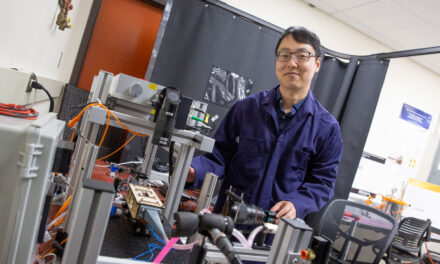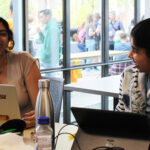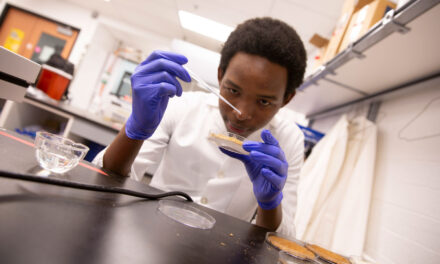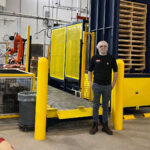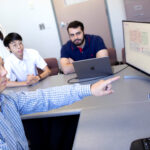
ASU lab provides invaluable insight into the user experience
Designed to help businesses, university partners know what their customers think about their products and services through evidence-based data and analysis
You’ve created a new mobile app. In addition to opinion-based focus groups and surveys, how do you know it works well for your customers, that they find it easy to use and engaging?
Or suppose you’re charged with creating a storefront display. How do you know people are drawn to the products you hope to sell?
What if you could virtually see through their eyes, or know what emotions they are feeling? And what if you could pair that to an exact action on your app, or the moment that captures their attention in your marketplace?
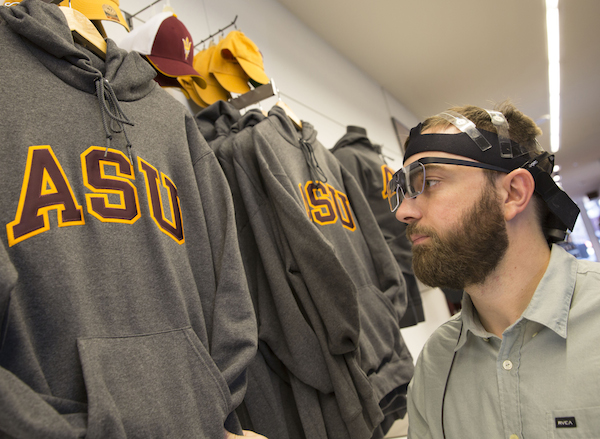
The iLUX Lab uses a suit of equipment to capture the user experience, including Tobii Glasses, a wearable eye tracking tool that captures attention and interest by monitoring the eye movement and gaze of the wearer, and the ABM X-10 wireless headset to measure EEG, head movement and position. Photographer: Jessica Hochreiter/ASU
A newly opened lab at Arizona State University’s Ira A. Fulton Schools of Engineering can provide the evidence-based data and analysis that will give you invaluable insight into the user experience.
The iLUX (Innovative Learner and User Experience) lab is designed to conduct a range of user experience studies. These range from small-scale usability studies during prototype development, to large-scale user experience studies for industry and university partners.
The lab is led by Robert Atkinson, engineering and education professor, whose research explores the intersection of cognitive science, informatics, instructional design and educational technology.
The state-of-the-art lab, located in the School of Computing, Informatics and Decision Systems Engineering, includes a complete range of biometric sensors:
- Brain computer interfaces that collect EEG data and provide constructs such drowsiness/alertness, engagement and mental workload.
- Eye tracking systems that track eye movement, gaze, fixation and pupil dilation.
- Facial-based emotion recognition system that collects facial images that infer emotions, such as joy, anger, sadness, etc.
- Galvanic skin response bracelet that measures arousal and heart rate.

The Tobii Mobile Device stand provides a stable environment for doing eye tracking on smaller mobile devices such as phones, tablets and e-readers. Photographer: Jessica Hochreiter/ASU
The iLUX Lab is unique – it is based in a research environment, yet also completely mobile.
“We have a distinct combination of high tech mobile biometric hardware and software that allow us to provide an all-in-one quantitative biometric user experience analysis for our customers, in both the lab and/or onsite,” said Jim Cunningham, a Ph.D. student at the Mary Lou Fulton Teachers College and an expert in learning analytics and data mining who works in the lab.
“We also can provide services from the experimental design to the data analysis and results interpretation, or we can work with the experts from the client side,” he said.
So how does it work? Take EEG, for example. Sensors are placed on the scalp of a user that record electrical signals 256 samples per second. These responses can be translated into measurements of attention, excitement, engagement, frustration or cognitive load.
Another system involves infrared cameras that capture visual attention and fixation. By recording eye movement, eye-tracking technology is able to record fixation points and how long a user gazes at certain elements. This data can be used to create heat maps of focus by users.
The systems are used in combination to provide the researchers information about the diverse reaction that a stimuli causes.
You can decide the level of service you need, whether it be use of equipment or complete suite of services using technicians and consultants. You can supply your own experts or work with those provided by the iLUX lab. The lab can provide services for small-scale studies and large-scale studies.
The iLUX lab is located in the Brickyard on ASU’s Tempe campus. For more information, visit the website http://ilux.lab.asu.edu or email: [email protected].
Media Contact
Sharon Keeler, [email protected]
(480) 965-4012
Ira A. Fulton Schools of Engineering


